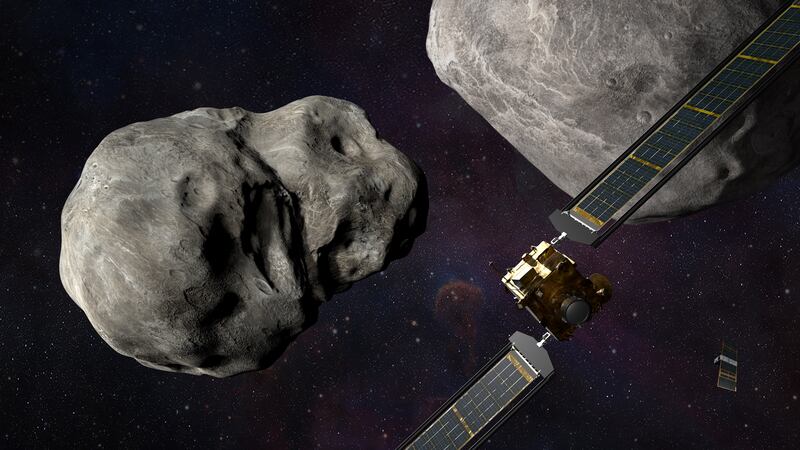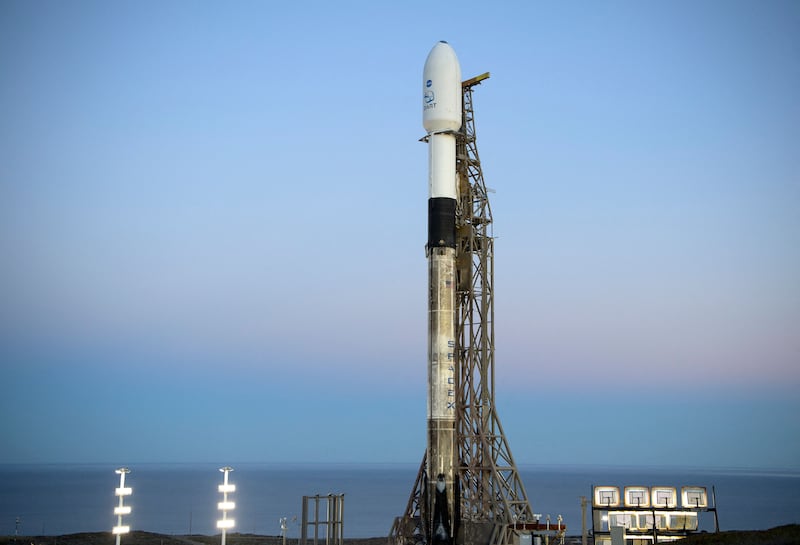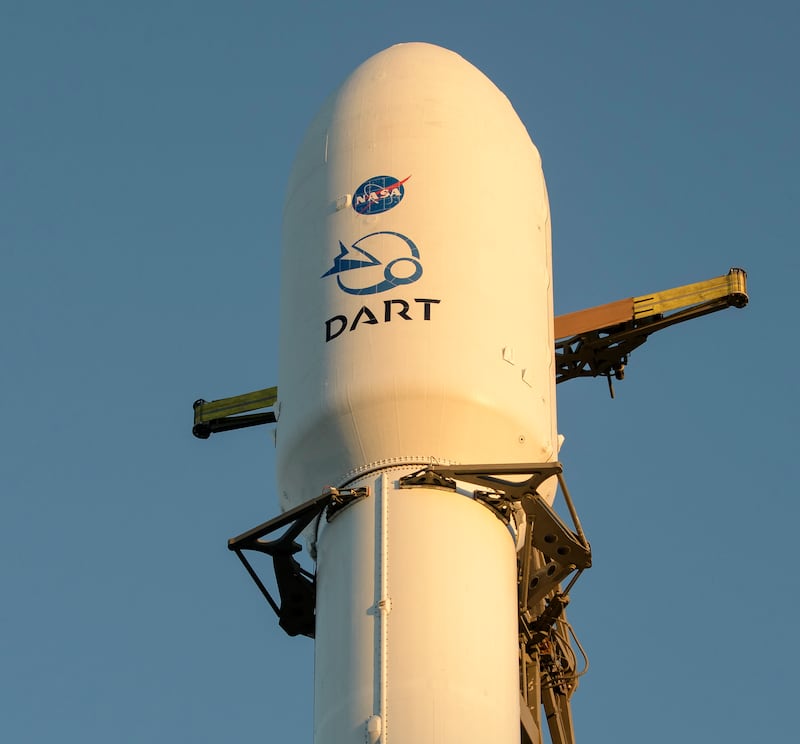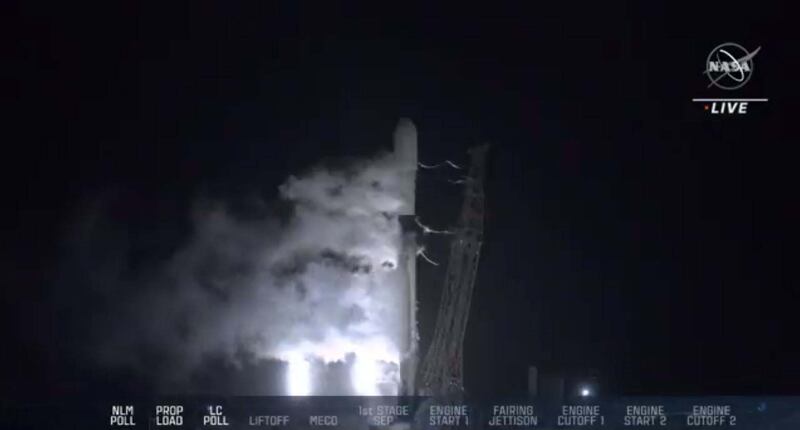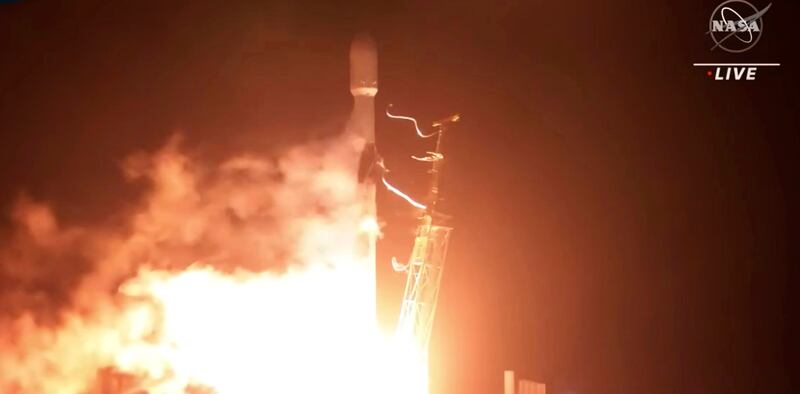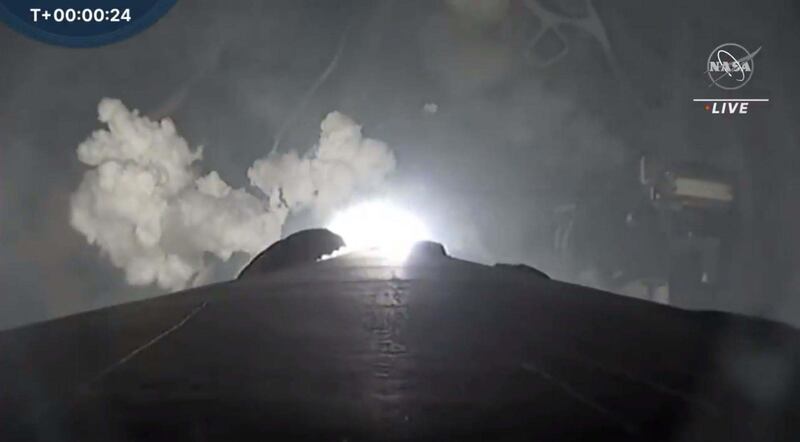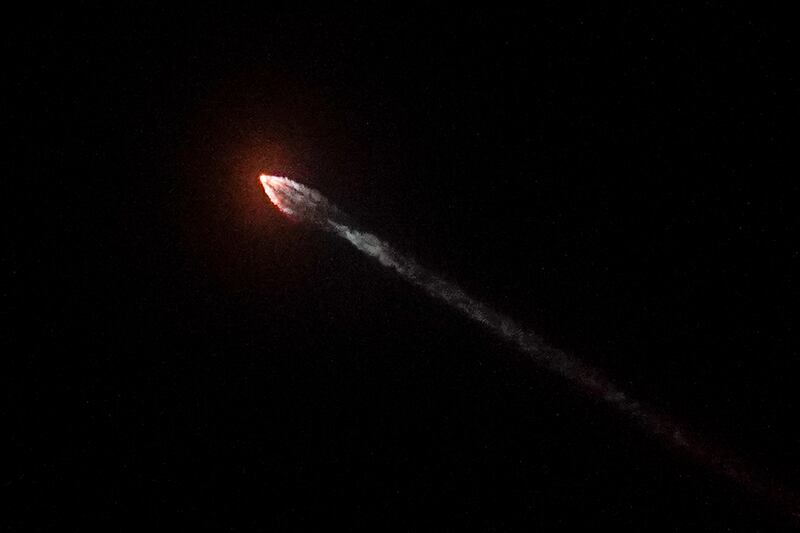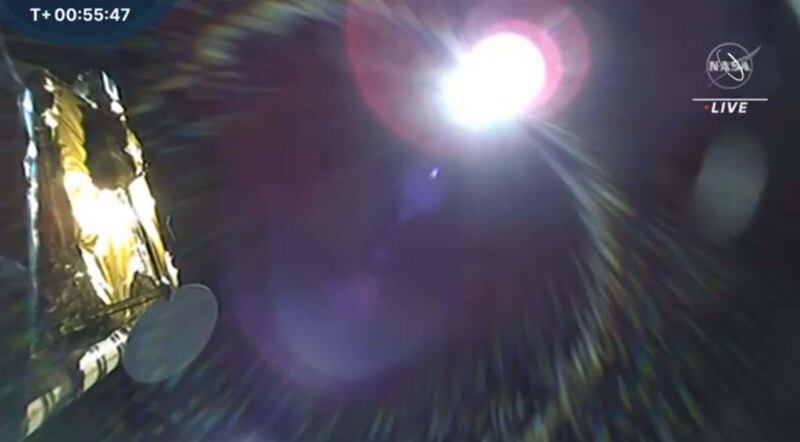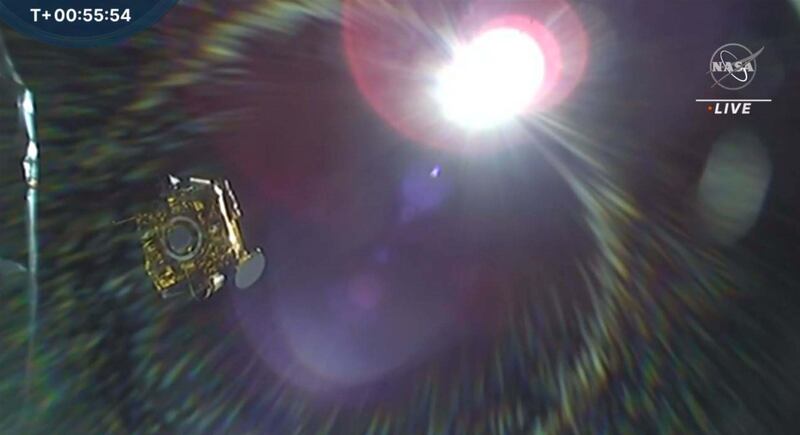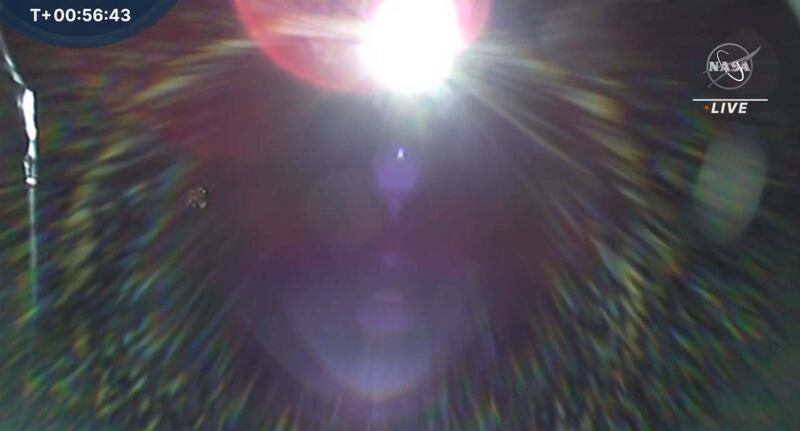A spacecraft will intentionally crash into an asteroid later this month — and Nasa will broadcast the event live.
The Dart, or Double Asteroid Redirection Test, will slam into the 160-metre-wide “moonlet” Dimorphos on September 27, UAE time, forcing it and its larger companion, Didymos, to shift it slightly off course.
Launched in November of 2021, the spacecraft has been speeding towards the binary asteroid system, which is 11 million kilometres from Earth.
The asteroids do not pose any threat to the planet, but Nasa wants to test Earth’s defences in case of real danger in future.
Lindley Johnson, planetary defence officer at Nasa’s headquarters, said that the mission would help them to prepare for any possible future impact threats.
“We have not yet found any significant asteroid impact threat to Earth, but we continue to search for that sizeable population we know is still to be found,” she said when the spacecraft was launched.
“Our goal is to find any possible impact, years to decades in advance, so it can be deflected with a capability like Dart that is possible with the technology we currently have.
“Dart is one aspect of Nasa’s work to prepare Earth should we ever be faced with an asteroid hazard.”
How will Nasa capture the impact?
Next week, the spacecraft will release a CubeSat, a mini satellite, that will capture the impact in photos.
The Italian Space Agency has provided the tiny satellite, called LiciaCube.
It will photograph the crash, as well as the cloud of ejected matter during and after the impact.
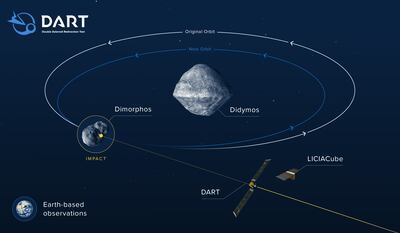
The test will help to show that a spacecraft can autonomously navigate to a target asteroid and intentionally collide with it ― a method of deflection called kinetic impact, Nasa said.
The Smart Nav system — an advanced guidance, navigation and control system with algorithms — is helping Dart to identify and distinguish between the two asteroids.
An hour before impact, the system will turn on and guide the spacecraft and direct it towards Dimorphos.
About four years after impact, the Hera project by the European Space Agency will be launched to carry out detailed surveys of both asteroids.
It will also study the crater left by Dart’s collision and will measure Dimorphos’ mass.
How to watch the live stream
Nasa will also live stream the event on its official website and social media channels, with coverage set to begin at 2am UAE time. The impact will take place at 3.15am.
The spacecraft will crash into the space rock at a speed of 24,000km an hour — fast enough to travel from New York to Paris in 15 minutes.
Dart has already set its sights on the asteroid target, with images of the space rocks taken on July 27 from a distance of 32 million km.
The composite images were taken by Dart’s DRACO camera, or Didymos Reconnaissance and Asteroid Camera for Optical navigation.
The images have helped to pinpoint the binary asteroid system’s exact location.
“This first set of images is being used as a test to prove our imaging techniques,” said Elena Adams, Dart mission systems engineer at the Johns Hopkins Applied Physics Laboratory.
“The quality of the image is similar to what we could obtain from ground-based telescopes, but it is important to show that DRACO is working properly and can see its target to make any adjustments needed before we begin using the images to guide the spacecraft into the asteroid autonomously.”
Are asteroids a threat to Earth?
Astronomers have been tracking near-Earth objects for decades to ensure none are on a collision course with the planet.
While many space rocks have been identified, there are still a lot more that are yet to be discovered.
About 65 million years ago, an asteroid crashed on Earth and killed 70 per cent of all species, including the dinosaurs.
Researchers believe the collision, known as the Chicxulub Impact Event, created devastating tsunamis, earthquakes, volcanic eruptions and wildfires.
In 2013, an asteroid crashed into the Russian city of Chelyabinsk. The asteroid exploded after entering Earth’s atmosphere and released energy equivalent to 500 kilotonnes of TNT.
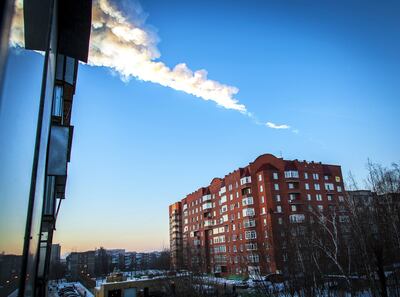
The incident caused more than 3,600 apartment windows to shatter, injuring more than 1,000 people.
Astronomers have also been tracking the Apophis asteroid, which could hit Earth.
The asteroid was at risk of hitting the planet in 2068, but researchers have since found the planet is safe for another century.
Apophis was discovered in 2004 and is expected to make an extremely close approach to Earth in 2029, passing about 32,000km above the planet’s surface.
This article was originally published on September 12, 2022.
